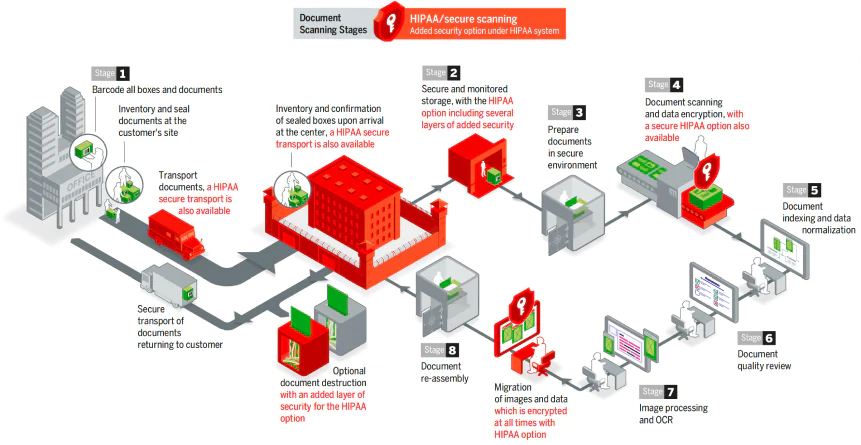Scanning Estimator


This tool has been designed to help you accurately assess paper volumes before beginning digitization. Whether converting documents, blueprints, or records into digital files, this tool provides detailed insights into project scope, ensuring that scanning services are planned efficiently and cost-effectively. Transitioning to a more organized, paper-free workflow starts here.
Once the Scanning Estimator has been used to calculate the volume of documents for scanning, the focus shifts to creating a customized plan for digitization. Key considerations for this phase include:
For assistance in creating a tailored plan, complete the form below to connect with an expert who can answer your questions and provide a step-by-step guide to achieving your scanning goals.

Effective digitization begins with understanding your document needs. The Scanning Estimator offers a precise way to measure paper volume, making it easier to manage project costs and timelines. By eliminating guesswork, it helps streamline workflows, minimize unexpected delays, and allocate resources efficiently. This essential step allows organizations to make informed decisions and set the foundation for successful digitization.
Measure the total height of your piles of paper in inches
160 pages per inch
Count the number of standard boxes (15"x12"x10") you have around the office
2400 sheets of paper per box
Measure the depth of drawer in inches
160 pages per inch
160 pages per inch
Measure the width of drawer in inches
160 pages per inch
160 pages per inch
Measure the total height of your piles of drawings in inches
2400 sheets of paper per box
The estimate is based on single page documents. The actual number of PDF pages (images) will vary depending on the percentage of printed duplex. The result is not meant to be used for pricing purposes and will not be used to provide a cost estimate.
Percentage of duplex printed (front/back) documents. On average, 20% of business documents are printed duplex, your percentage may be different.

Review Date
Full Text

The Scanning Estimator plays a vital role in setting up a successful digitization project. Its benefits include:
Our team of document conversion experts maintains a highly secure chain of custody and complies with the most stringent requirements

Taking these steps prepares you for a smooth transition from physical to digital document management, eliminating inefficiencies and ensuring successful results.
The Scanning Estimator is an invaluable first step in the journey toward digitization. By providing an accurate assessment of document volumes, it sets the foundation for a cost-effective, efficient, and streamlined project. Careful preparation, from organizing physical files to deciding on post-scanning storage, ensures every aspect of the process is handled effectively. Start planning your digitization process today with the Scanning Estimator and take control of your document management needs.
Helping you achieve your goals is our priority